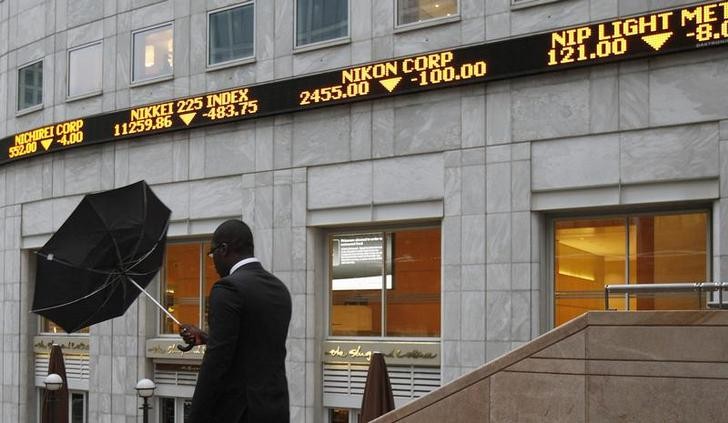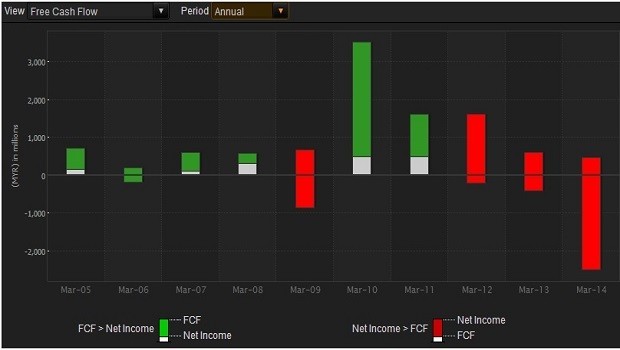Risky Business Check These Warnings Before Navigating The Shoals Of Distressed Debt
Post on: 16 Март, 2015 No Comment

Risky Business: Check These Warnings Before Navigating The Shoals Of Distressed Debt
With interest rates bumping along at low levels, investing in distressed assets has plenty of appeal. However, interest in this asset class which includes entities in default or bankruptcy is outpacing activity, especially in what was thought to be an active European market. Veteran banker Robert Willoughby tells Alpha Now why that might be the case, and sends up some warning flags for those setting sail on this investment strategy.
Ultra-low interest rates and rock-bottom yields on even the safest of fixed income securities are pushing investors to seek ever-higher yields. Retail and institutional investors are evaluating high-yield mutual funds and more sophisticated institutions are putting money to work in the distressed debt markets.
Love Affair Over?
Hedge funds loved distressed debt last year it was the top-performing hedge fund strategy in 2012, according to data from Eurekahedge, showing an average return of 13.67%. In the first two months of 2013, this strategy returned nearly 4%. (Data for March were not available at the time of writing.)
Still, many investors seem wary as inflows and investment activity have yet to take off. Eurekahedge data show that while assets under management in distressed strategies totaled 6% of all assets under management in strategic mandates as of December 2007, that had declined to 5% as of December 2009 and a mere 3% as of December 2012. Indeed, for every dollar of performance gain, there was $2 of net outflows on a relative basis.
Piecing Together the Distressed Debt Puzzle
In mid-April, a group of distressed investing specialists gathered at the global headquarters of Thomson Reuters in New York to discuss this conundrum and other issues related to this emerging asset class.
Robert Willoughby. former chairman of the Leveraged Finance Origination and estructuring Group at Credit Suisse, told Alpha Now that he has watched as interest in distressed debt has increased along with the difficulty in investing in this asset class.
Willoughby said one hedge fund CEO told him he was interested in Europe, but “we haven’t figured out how to crack the Euro market” yet.
It isn’t just the European market that offers challenges to potential investors in distressed securities, Willoughby pointed out. “As a distressed investor you are buying something someone else created; you have to be a forensic financial analyst to understand what the instrument is really worth, and to understand the appropriate discount,” he explained. “A lot of the debt instruments that people are chasing are discounted because they should be, because the borrower can’t pay or because the current owner needs to sell and there isn’t a demand” for the assets in question, so prices plunge.
Doing the Due Diligence
As an investor moves further along the risk spectrum — from analyzing investment-grade corporate bonds, to seeking out opportunities in high yield securities and ultimately trying to understand the nuances of distressed investing — the complexity and magnitude of the due diligence challenge increases.

For instance, investors in investment-grade corporate debt and top-rated high-yield issues can “borrow confidence” from analysts who publish research on the company or who apply a credit rating to the specific security. That kind of guidance is absent from the distressed investing arena, where potential investors need to understand the asset they are buying and the motivations of the seller and of other potential buyers. For instance, Willoughby pointed out, “the value of leveraged loans in Europe in 2007 and 2008 fell off a cliff; prices went from 96 to 76 (per $100) without hard evidence of impairment (of the credit quality) just because demand fell off a cliff.”
European Complexities
Willoughby believes that similar issues are constraining growth in today’s European market, which logic suggests should be full of opportunities for eager investors in distressed assets. However, European banks, in particular, have been slow to dispose of assets. “The slow pace of selling has forced the creation of a much more rational and rational market price,” he says. “If something trades at 65 (cents on the dollar), either that is what it is worth or the unknowns justify the price.”
The difficulties associated with cross-border investing in distressed assets is another reason that activity in the European market hasnt taken off, Willoughby suggests. Moving offshore magnifies the challenges. “When you have multiple assets, each of which has a legal claim whose validity you have to investigate,” the level of complexity increases, he noted.
Final Thoughts
So the result today is a tug-of-war between motivated investors hunting for yields and the tempting returns that this corner of the financial market can generate. However, investors taking this journey need to look for signposts that warn of broad issues concerning valuation, liquidity and risk.
Receive stories like this to your inbox as they are published. Subscribe here and follow us @Alpha_Now on Twitter. If you are looking to access Thomson Reuters data or analytics, register for a free trial.














